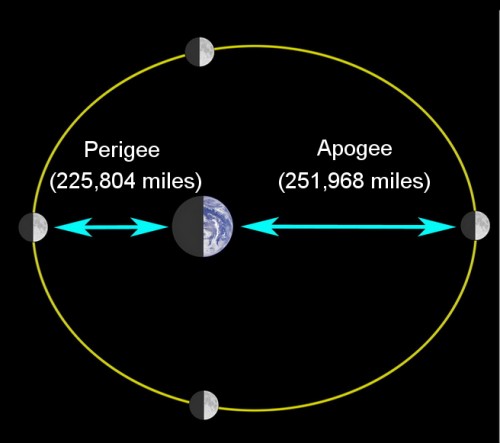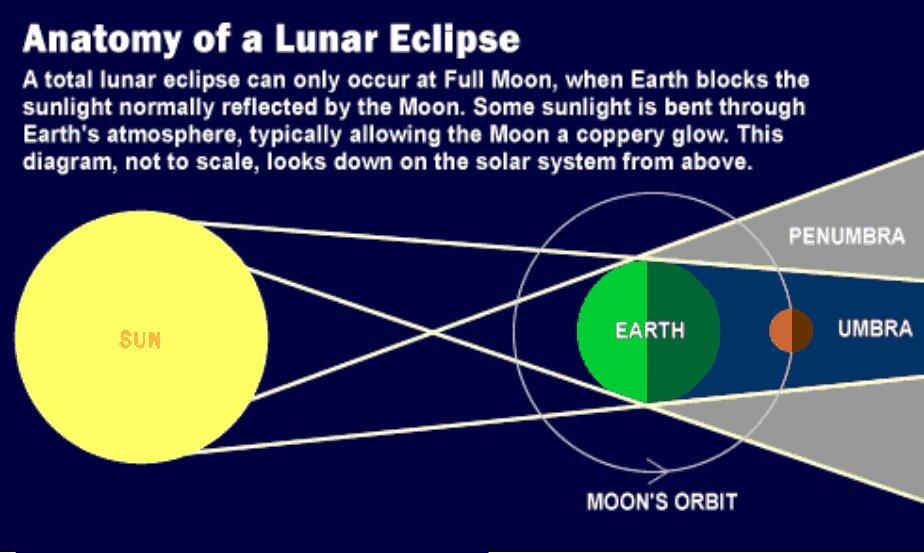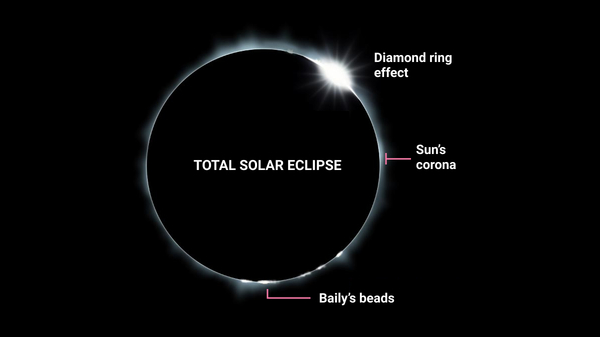Geography
Total Lunar Eclipse and Supermoon
- 26 May 2021
- 4 min read
Why in News
Two celestial events - Total Lunar Eclipse and Supermoon - together coincide on 26th May 2021.
Key Points
- Supermoon:
- A supermoon occurs when the Moon’s orbit is closest to the Earth at the same time that the Moon is full.
- As the Moon orbits the Earth, there is a point of time when the distance between the two is the least (called the perigee) and a point of time when the distance is the most (called the apogee).
- Since a full Moon appears at the point of least distance from earth, not only does it appear to be brighter but it is also larger than a regular full moon.
- According to NASA, the term supermoon was coined by astrologer Richard Nolle in 1979. In a typical year, there may be two to four full supermoons and two to four new supermoons in a row.
- A supermoon occurs when the Moon’s orbit is closest to the Earth at the same time that the Moon is full.
- Lunar Eclipse:
- About:
- Lunar eclipse takes place when the Moon moves into the Earth’s shadow. The Earth has to be directly between the Sun and the Moon, and a lunar eclipse can only take place during a full Moon.
- First, the Moon moves into the penumbra – the part of the Earth’s shadow where not all of the light from the Sun is blocked out. Part of the Moon’s disc will look dimmer than a regular full Moon.
- And then the Moon moves into the Earth’s umbra, where direct light from the Sun is totally blocked out by the Earth. This means the only light reflecting off the Moon’s disc has already been refracted, or bent, by the Earth’s atmosphere.
- Total Lunar Eclipse:
- During this, the whole of the lunar disc enters the Earth’s umbra, so the Moon appears reddish (Blood Moon). This won’t last forever, though.
- After about 14 minutes, the Moon will move out of Earth’s umbra and back into its penumbra. In total, the lunar eclipse will last a few hours.
- Red light has a longer wavelength than blue light, which gives the lunar eclipse its characteristic reddish colour.
- On Earth, we see the same effect during sunrises and sunsets, when the sky has a more reddish glow than during the day.
- About:
Total Solar Eclipse
- Total solar eclipses occur when the New Moon comes between the Sun and Earth and casts the darkest part of its shadow, the umbra, on Earth. A full solar eclipse, known as totality, is almost as dark as night.
- During a total eclipse of the Sun, the Moon covers the entire disk of the Sun. In partial and annular solar eclipses, the Moon blocks only part of the Sun.
- When the Moon completely covers the disk of the Sun, only the Sun's corona is visible.
- It is called Total eclipse because at the maximum point of the eclipse (midpoint of time of totality), the sky goes dark and temperatures can fall.







